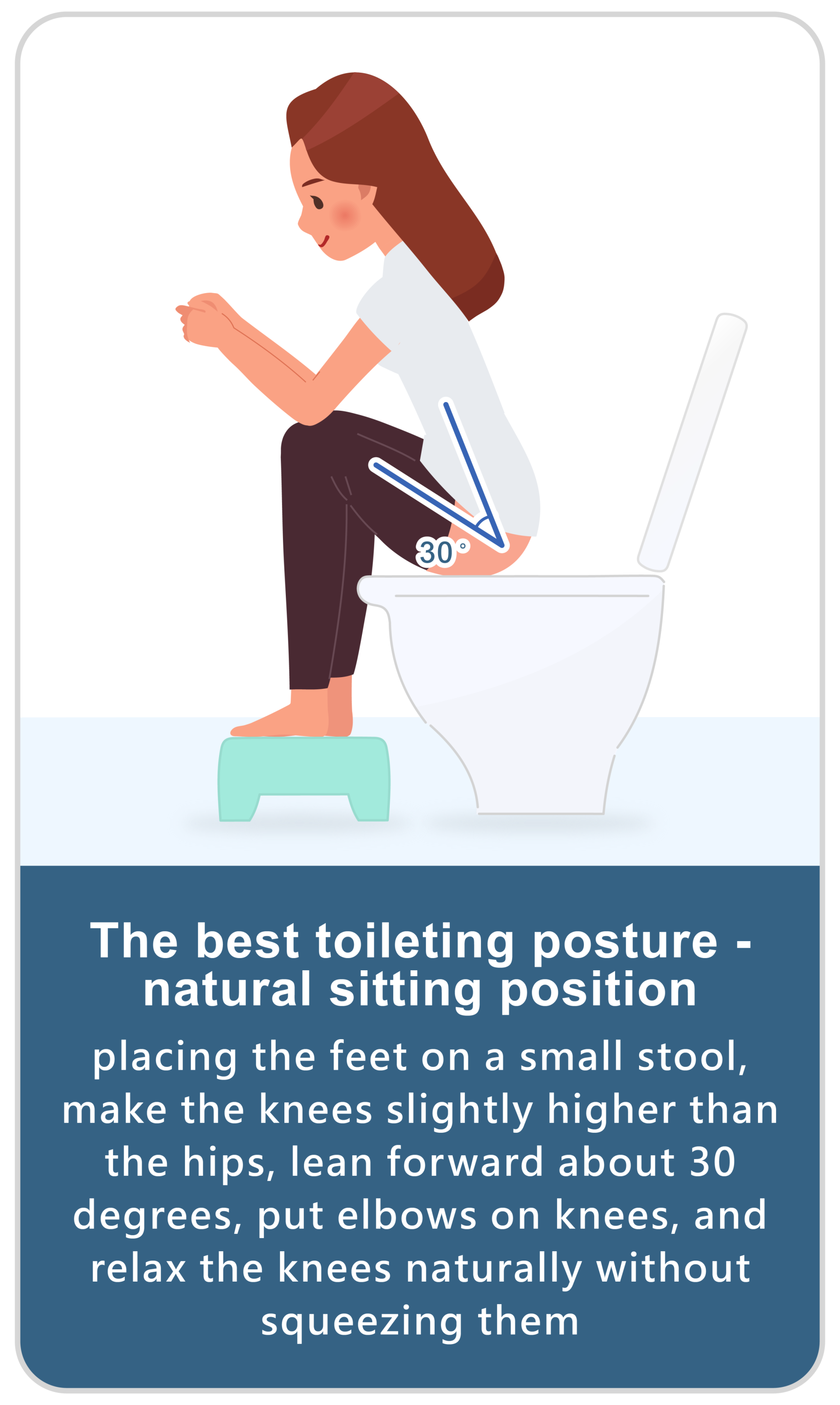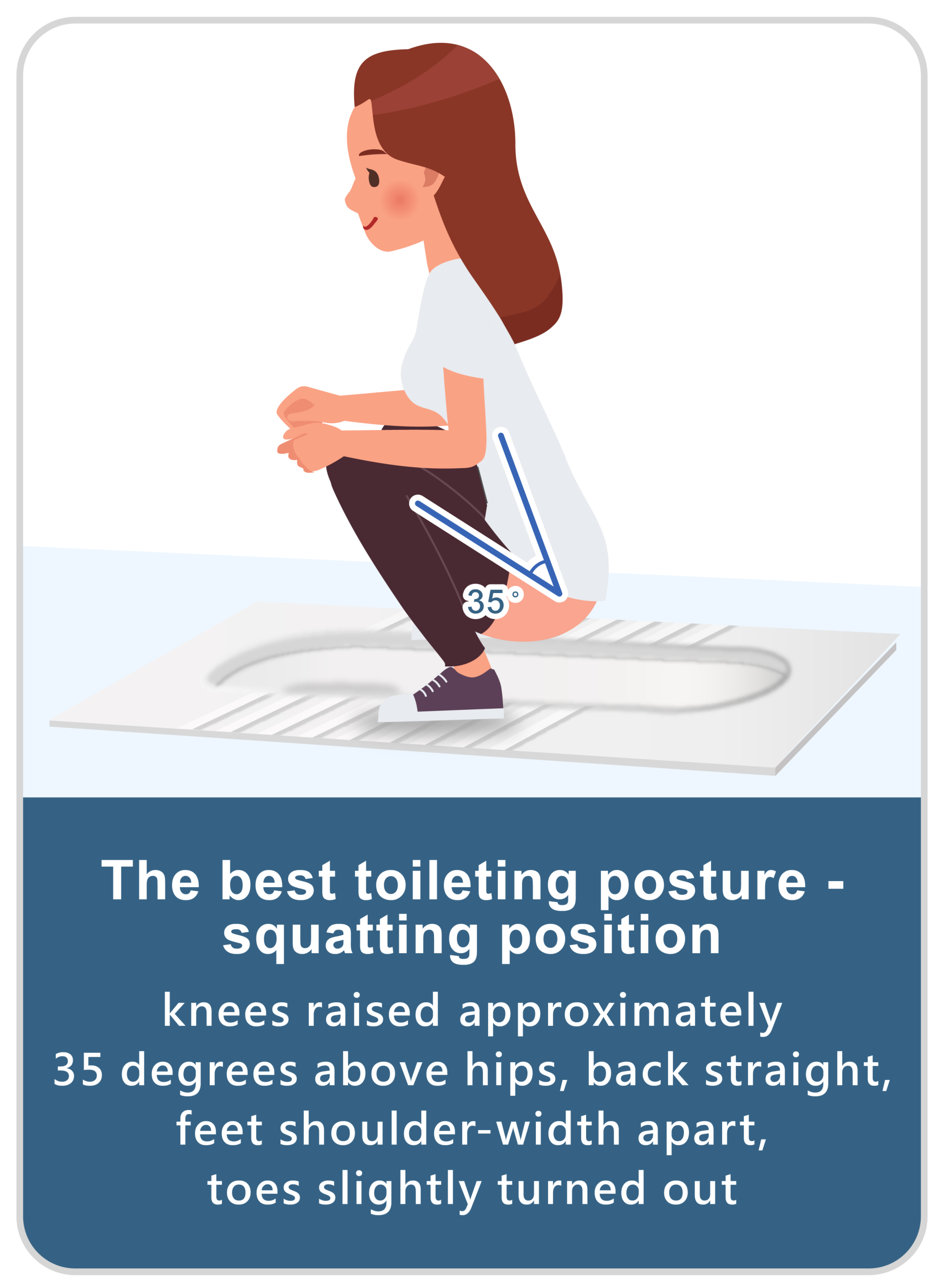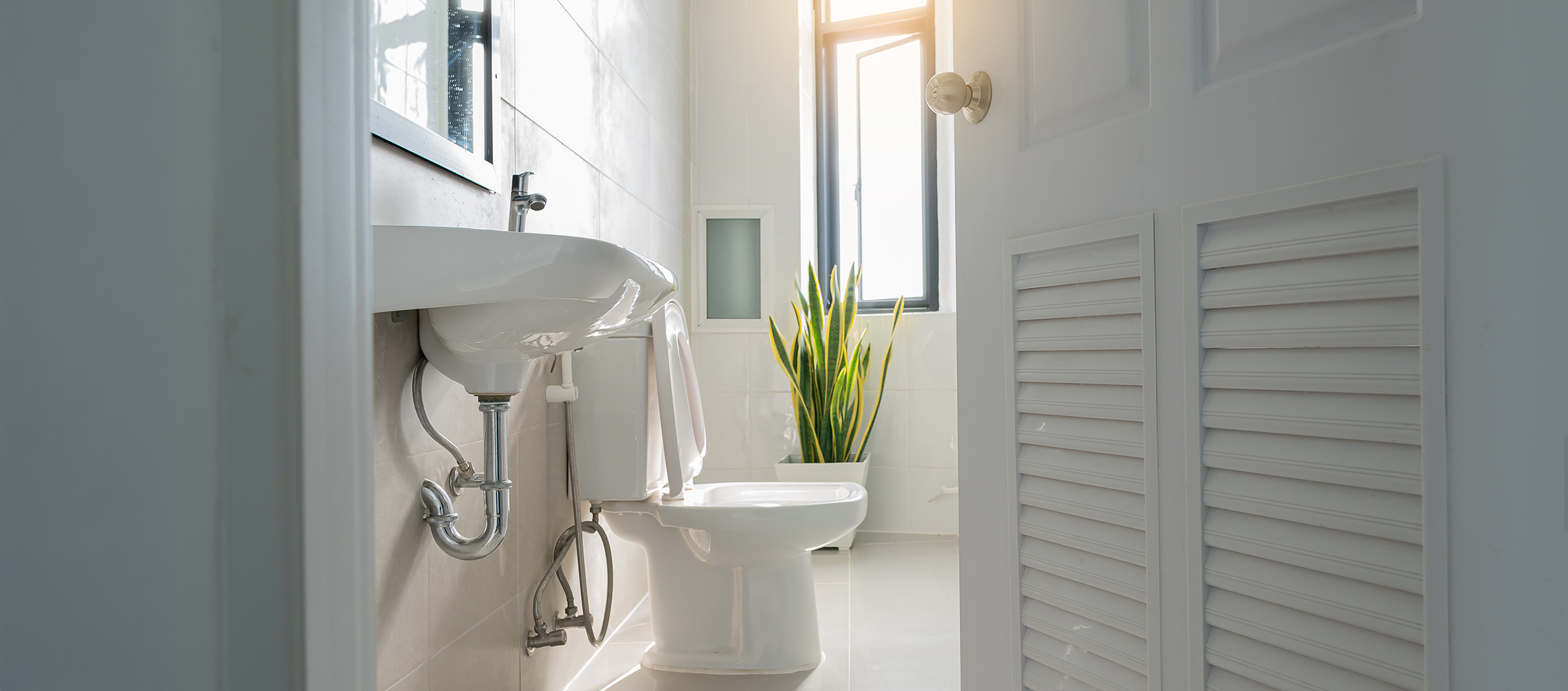Sitting vs. Squatting: Which is Better for Bowel Movements?
Since sitting toilets are commonly being found everywhere in Hong Kong, it's generally assumed that sitting toilets are better in terms of comfort and safety. However, it turns out that sitting toilets aren't as ergonomic as squatting toilets when it comes to bowel movement.
When we sit to defecate, the rectum is positioned at an unnatural angle, which would increase its pressure and result in increasing risks of haemorrhoids, constipation and varicose veins.
Conversely, when we squat to defecate, the pelvic floor muscles that tighten and close the anal canal relax, straighten the rectum and reduce its pressure. This allows the stool to be pushed outward by gravity to facilitate bowel movement.
Indeed, how can we achieve the optimal toilet posture?
How to Achieve the Optimal Toilet Posture?

The optimal toileting posture depends on the style of toilet and individual's body strength and balance. For example, for the sitting toilet commonly used in Hong Kong, we can apply additional equipment if possible and adjust the body to achieve a posture close to a natural squatting posture, such as placing the feet on a small stool, place the knees slightly higher than the hips, lean forward about 30 degrees, put elbows on knees, and relax the knees naturally without squeezing them.
Pregnant women can also spread their legs wider to reduce abdominal pressure and use a lumbar support cushion to prevent excessive pressure on the waist. Elderly people can consider installing handrails and using a raised toilet seat to assist with standing when necessary.
Common toilet posture mistakes include dangling feet, leaning back to scroll mobile phone, and straining during bowel movements. These postures' mistakes not only prolong toilet visit time and make bowel movement more difficult, but they may also lead to dizziness or health problems such as hemorrhoids and varicose veins due to increased pressure on the rectum.

For squatting toilet, we can apply natural squatting position by keeping knees raised approximately 35 degrees above hips, back straight, feet shoulder-width apart, toes slightly turned out. This position effectively straightens the rectal angle, facilitating smoother bowel movements, reducing the amount of force required, and lowering the risk of hemorrhoids. However, elderly, pregnant women, and those with mobility, knee and hip issues should be more cautious when applying it.
In summary, proper toilet posture is crucial per se; one should find his/her optimal toilet posture based on own physical abilities and facilities provided.
Leg Numbness During Toileting: Causes and Risks
Perhaps many people have encountered leg numbness during toileting, and most people can relate it as a consequence of having the same posture for a prolonged period of time.
In fact, sitting on the toilet for more than 10 minutes can compress the sciatic nerve and cause numbness in legs; while squatting can compress the blood vessels and nerves behind the knees in an even shorter time and causing numbness.
In addition, other personal health factors, such as joint degeneration, poor blood circulation and neuropathy can exacerbate leg numbness; elderly, those with limited mobility, hemorrhoids, lumbar disc herniation, and chronic diseases such as diabetes and cardiovascular disease are at higher risks of suffering from leg numbness. Therefore, these groups should pay special attention.
If we experience leg numbness, we should firstly hold on to a handrail for support, then stand up or adjust the posture to avoid continued nerve compression and shake the leg gently to promote blood circulation. If the numbness persists, try massaging the numb area with palm by moving upwards from the ankle to the thigh.
In addition, doing ankle pumps exercise, which involves moving the toes up and down for 10-20 times; or apply a hot towel (with temperature around 40°C) to the back of the knee for about 5 minutes, can also effectively speed up blood circulation in a short period of time.
To solve leg numbness during toileting, the most effective strategy is to limit the visit to 5 minutes and avoid prolonged sitting or squatting. Using auxiliary tools, such as toilet seat raisers and toilet footrests, can also prevent leg numbness.
If leg numbness persists for more than one hour and cannot be relieved by the above methods, or there are other symptoms occur, such as incontinence, severe low back pain, unilateral leg numbness and weakness, etc., this may be the warning signs of emergency health issues and patient should seek medical attention immediately.











